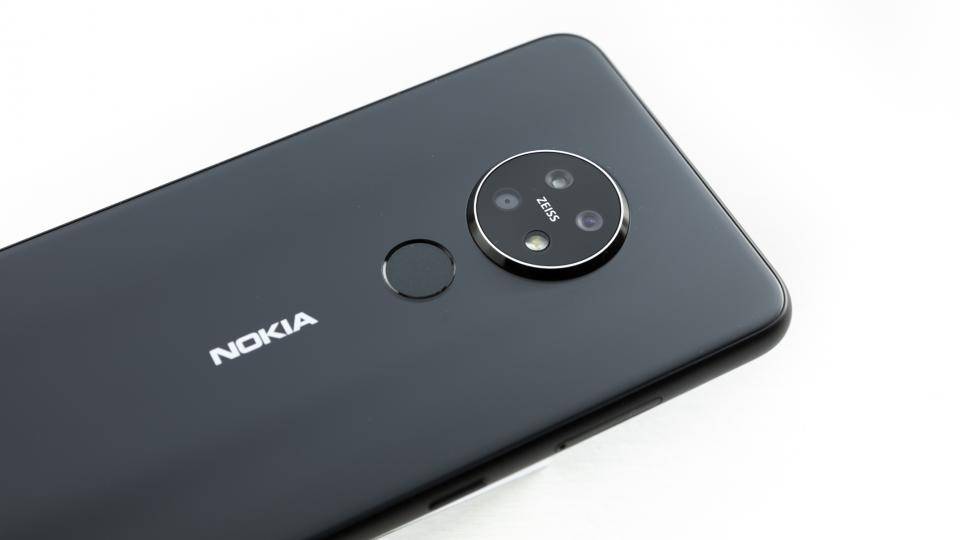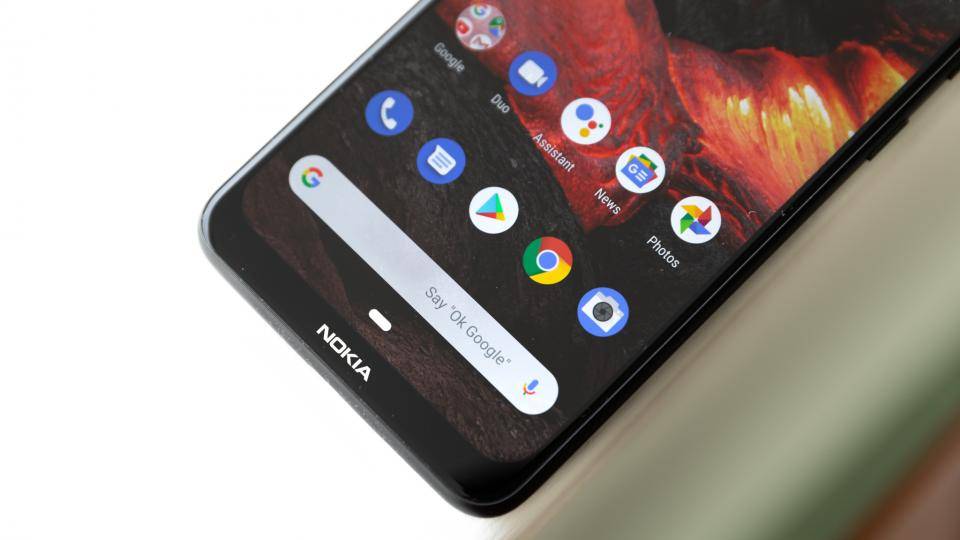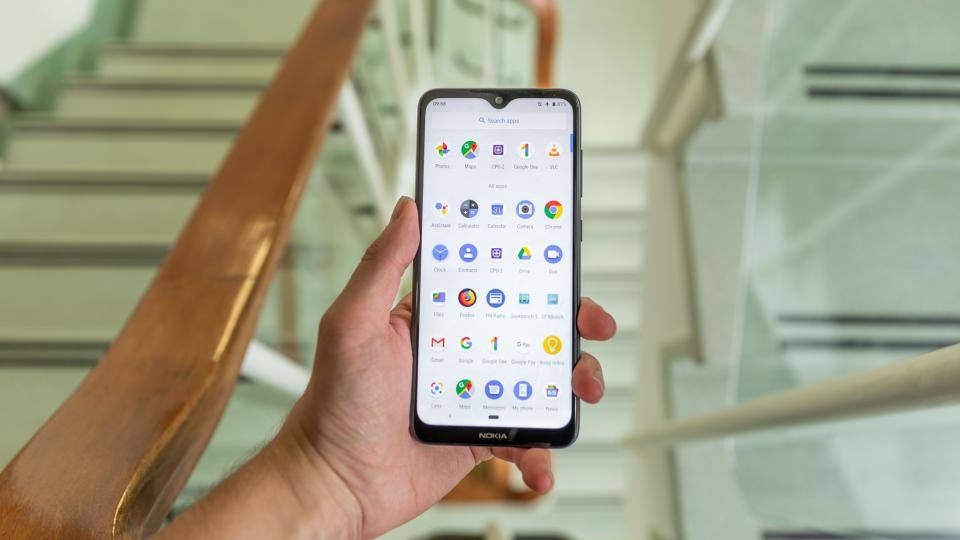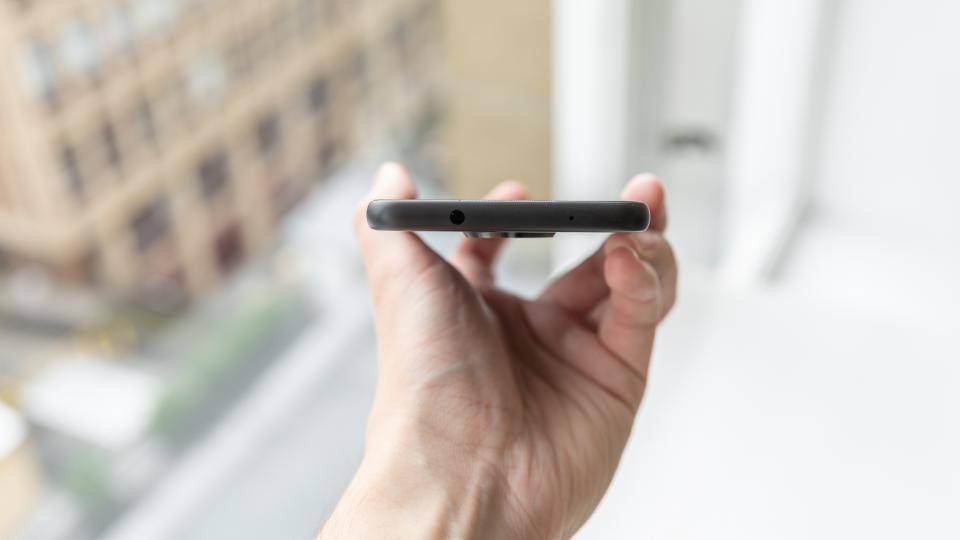Nokia’s smartphone output is unrelenting, and rather than take a well-earned break as the year draws to a close, it’s yet again cramming as many smartphones as it can possibly push into a t-shirt cannon, then firing it point-blank into the crowd.
READ NEXT: Best mid-range smartphones
In fact, Nokia somehow managed to squeeze a total of five new handsets into its short one-hour presentation at this year’s IFA press conference , so you’d be forgiven for struggling to separate the wheat from the chaff if you’re due an upgrade anytime soon.
Take a cursory glance at that list – which includes a flip phone – and you might spot the Nokia 7.2 buried between the budget and flagship bookends of the smartphone pricing scale. Ostensibly combining top-end attributes with cutthroat pricing, it looks like the 7.2 could be Nokia’s finest smartphone to date.
Nokia 7.2 review: What you need to know
Let’s not get ahead of ourselves, though. The Nokia 7.2 is par for the course of what you should expect from the Finnish telecoms giant by this point, not that that’s a bad thing. In the last two years we’ve seen some truly great-looking handsets make an appearance, and aside from a few stumbles along the way, most of these smartphones have garnered some form of recommendation.

Aside from the design (which I'll talk about later) the Nokia 7.2 isn’t the flashiest of smartphones. It has a modest 6.3in Full HD screen, is powered by a relatively unassuming Qualcomm Snapdragon 660 processor and it uses 4GB of RAM with 64GB of expandable storage.
The main reason you’re going to want to buy one, however, is for the lofty promises of its photographic capabilities. The Nokia 7.2 benefits from a Zeiss-branded 48-megapixel camera on the back, along with an 8-megapixel wide-angle camera and depth-sensing unit for fancy blurred-background portraits. A 20-megapixel camera sits on the front of the phone, embedded inside the teardrop notch.
Nokia 7.2 review: Price and competition
The Nokia 7.2 will cost you £299 in the UK, placing itself firmly in the middle ground between cost-cutting budget handsets and extravagant flagships. This area of the market is much more contested than it’s ever been, following the meteoric rise of mid-range handsets in recent months, so the Nokia 7.2 has plenty of rivals.

The most notable is the Sony Xperia 10 with its elongated 21:9 screen. We didn’t think it was the best phone at this price, though, with a poor battery life and underwhelming internal specifications. That screen might be lovely, but it simply isn’t enough to justify the price.
If you don’t mind spending a little bit more – edging closer to the £400 mark – then the Pixel 3a currently wears the mid-range crown. There’s no better camera for the money, and its software offering is just as refined as the Nokia 7.2’s.
Of course, you often find much better value for money if you point your wallet towards Chinese manufacturers like Xiaomi. If you really have your heart set on a Snapdragon 660-powered phone, for instance, then you can pick up a Xiaomi Redmi Note 7 for only £169.
Nokia 7.2 review: Design and key features
Straight off the bat, the Nokia 7.2 punches well above its featherweight pricing when it comes to looks. The front of the phone might be a bit boring, with a simple teardrop notch eating its way into the top of the generously sized screen, but flip the phone over and I’m certain you’ll be just as impressed as I was when I pulled it from the box.

The frosted Gorilla Glass-coated rear – which can be picked up in ‘Cyan’, ‘Charcoal’ or ‘Ice’ – shimmers nicely in the sun, and it’s not as susceptible to fingerprints as the glossy finish on last year’s phone. The slightly curved edges with softly rounded corners are an equally nice touch, too.
It looks fantastic, and it’s all part of Nokia’s new approach of combining (in its own words) “Nordic design elements with practical technology”. The 7.2 is manufactured using a polymer composite that, according to Nokia, is twice as strong as polycarbonate and half the weight of aluminium.
Elsewhere, Nokia has shifted the layout of the rear-mounted cameras, moving them into a circular arrangement that looks quite similar to Motorola’s own mid-range handsets. It’s certainly a neat look, even if the camera housing protrudes quite a bit from the rest of the phone.
Of course, its other physical attributes are all accounted for – there’s a volume rocker and power button on the right edge, with a USB Type-C port and a solitary speaker grill sensibly placed on the bottom. Mercifully, Nokia hasn’t followed the trend of removing the 3.5mm headphone jack either. You’ll find it on the top edge.

A somewhat irritating trend that Nokia has decided to follow, however, is the inclusion of a dedicated Google Assistant button next to the dual-SIM tray on the left side. In my time reviewing smartphones with Google’s digital butler baked-in, I haven’t ever needed to use this button – only ever pressing it accidentally. Guess what? The same applies here.
Nokia 7.2 review: Display
The Nokia 7.2 benefits from the same size screen as the £869 Galaxy Note 10 – that’s 6.3in from corner to corner if you didn’t already know – and this phone is also FHD+ in resolution (2,220 x 1,080), with an impressive 96% screen-to-body ratio.
Now that I’ve had the opportunity to set our colour calibrator loose on a review unit, It’s clear that this screen is rather good for a phone this cheap. I found that it covered 99.7% of the sRGB colour gamut, with an average Delta E of 2.13. In layman’s terms, that means colour performance is as good as you can expect from a phone at this price, with only a few issues of oversaturation in some dark red tones.
Brightness isn’t bad either, with a measured peak luminance of 504cd/m2, which is slightly ahead of the Redmi Note 7’s 467cd/m2, though a long way behind the dazzling 766cd/m2 of the iPhone 11 Pro . Of course, the Nokia 7.2 is still fine for outdoor use, and the high contrast ratio of 1,416:1 helps boost readability too.
Nokia 7.2 review: Performance and battery life
The Nokia 7.2 is powered by the ageing Qualcomm Snapdragon 660 processor, with eight cores clocked at up to 2.2GHz and an Adreno 512 GPU for graphics processing. Nokia’s newest mid-ranger also uses 4GB of RAM for multitasking, with 64GB of internal storage expandable up to a further 512GB via the phone’s microSD card slot.
We last saw this 2017 chipset powering the Nokia 7 Plus, so it’s getting a little long in the tooth, yet performance is actually better than most other phones in this price bracket. According to the Geekbench 4 benchmark, the Nokia 7.2 outperforms its predecessor by roughly 17% in multi-core-processing and 19% in single-core.
Gaming performance is equally rapid, producing an average frame rate of 20fps in the GFXBench Manhattan 3.0 on-screen test. That might not match those silky-smooth gaming experiences you typically get with more expensive flagships, but the Nokia 7.2 managed to hold its own when playing the likes of Call of Duty Mobile and Mario Kart Tour.
Sadly, while the Nokia 7.2 clearly beats its forebear when it comes to performance, it fails to make any notable improvements on its predecessor’s terrible battery life. In fact, it feels like a terrible case of deja vu here, with the Nokia 7.2 only managing to achieve a total of 10hrs 25mins in our standardised video rundown test.
Let’s not understate how poor this result really is, especially as more power-hungry smartphones are regularly exceeding 20 hours under the same conditions. You’ll be topping up the Nokia 7.2’s 3,500mAh battery more often than most, so a power bank is an essential companion in this case.
Nokia 7.2 review: Camera
Finally, let’s move on to the subject of cameras, which are undoubtedly the Nokia 7.2’s raison d'être. Nokia made a big fuss about its photographic capabilities at the big unveiling, particularly emphasising that it’s finally bringing Sony’s 48-megapixel (f/1.8) sensor to the mid-range market.
However, we’ve seen some iffy results from this camera in the past, most notably with the OnePlus 7 Pro and its watercolour-like images, so I quietly had my reservations before receiving the phone for review.
These initial reservations, as it turns out, are entirely warranted. The Nokia 7.2’s 48MP shooting mode – which isn’t on by default and you have to enable in the settings – isn’t great; it seems to capture washed-out images that are lacking in any discernible detail. Even if you’re outdoors with plenty of light, images look soft and objects lack definition. You can see this in my test images, where houses seem to merge with the taller buildings behind them:
You’re better off sticking with the default 12MP shooting mode. It’s miles better and even manages to take almost as good snaps as the Pixel 3a in some instances, which costs £100 more. There’s plenty of intricate detail, even on a gloomy autumn afternoon in London, and the HDR mode works well, equalising bright and dark areas without altering the colour rendition.
With this being a 2019 phone, this isn’t the only camera we have to work with. The 48-megapixel camera is backed by a further two sensors; one a 118-degree wide-angle lens, and the other is a depth sensor for blurred background portraits. Nokia is particularly impressed with the 7.2’s portrait capabilities, allowing you to adjust bokeh levels (essentially how blurred the background is) on the fly, or even after you’ve snapped your shot. It’s certainly not the best portrait mode I’ve used – outlines look unnaturally soft and blend into the background – but the results are pretty good for the price.
The Nokia 7.2 is also supposed to be very good at capturing detail-rich pictures in low-light, thanks to some fancy HDR algorithms and an ‘image fusion’ tech, which essentially takes multiple images and combines them when you press the shutter. I feel like I’m repeating myself here, but low-light pictures aren’t as good as those from the Pixels’ terrific Night Sight mode, although the Nokia 7.2 did do a decent job at brightening up shots.
Switch over to video, and the shooting modes are surprisingly limited. You can only shoot in Full HD or 4K at 30fps with the Nokia 7.2; there’s no fancy 60fps recording, and the footage isn’t stabilised, either. The quality is fine enough, but it has difficulty with automatic exposure.
Nokia 7.2 review: Verdict
Though I sang its praises at the unveiling, my time with the Nokia 7.2 has changed my mind. It’s now abundantly clear that the offering is a bit of a mixed bag. It excels in many areas, including design, performance and display quality. Yet the battery life issues are a serious threat to any potential recommendation.
But perhaps most of all, I’m sorely disappointed with the camera. It’s good, and a decent enough offering for the price, but it doesn’t manage to live up to Nokia’s lofty promises. The Nokia 7.2 just about scrapes by through combining top-shelf features with a price that won’t empty lighter wallets, but some of those features aren’t nearly as good as I’d hoped.
|
Nokia 7.2 specifications |
|
Processor |
Octa-core Qualcomm Snapdragon 660 (4x2.2GHz, 4x1.8GHz) |
|
RAM |
4GB |
|
Screen size |
6.3in |
|
Screen resolution |
2,280 x 1,080 |
|
Pixel density |
400ppi |
|
Screen type |
IPS |
|
Front camera |
20MP (f/2.0) |
|
Rear camera |
48MP (f/1.8), 8MP wide (f/2.2), 5MP depth |
|
Flash |
LED |
|
Dust and water resistance |
N/A |
|
3.5mm headphone jack |
Yes |
|
Wireless charging |
No |
|
USB connection type |
USB Type-C |
|
Storage options |
64GB |
|
Memory card slot (supplied) |
microSD (up to 512GB) |
|
Wi-Fi |
802.11ac |
|
Bluetooth |
5 |
|
NFC |
Yes |
|
Cellular data |
4G |
|
Dual SIM |
Yes |
|
Dimensions (WDH) |
160 x 75 x 8.3 mm |
|
Weight |
180g |
|
Operating system |
Android 9 |
|
Battery size |
3,500mAh |











